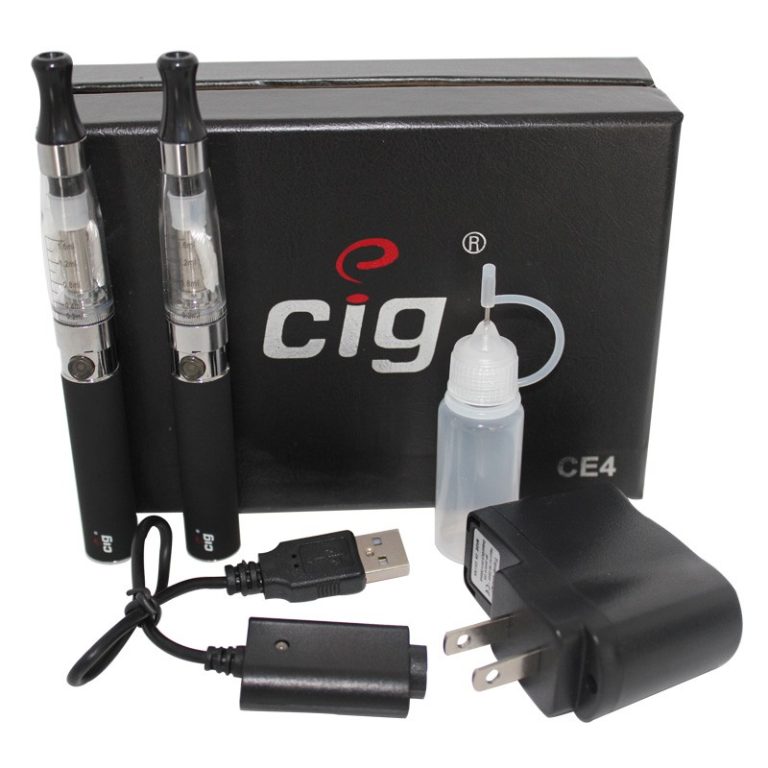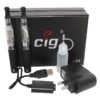E-cigarettes are Analyzed on Their Harmful and Helpful Effects
Originally a Chinese invention, e-cigarettes hit the U.S. market in 2006, and sales of the tobacco-less cigarettes have skyrocketed. An estimated 3.6 million Americans are e-cigarette users, and online and retails sales of e-cigarettes are expected to reach $1.7 billion by the end of 2013, according to the Tobacco Vapor Electronic Cigarette Association. Hailed by some as a safer alternative to traditional cigarettes and a potential smoking-cessation device, e-cigarettes have become quite controversial as public health officials pressure the U.S. Food and Drug Administration (FDA) to curb the sale and marketing of e-cigarettes to children and teens. At least six other countries have taken steps to limit their use.
Are e-cigarettes safe and worth checking out? That depends on who you ask.
Pros of E-Cigarettes
- While e-cigarettes contain nicotine — the mood-altering addictive agent in cigarettes — they do not have the tobacco, tar or toxic chemicals found in cigarette smoke. These chemicals are the harmful ingredients that contribute to cancer, heart disease and lung problems.
- They come with various strengths of nicotine and some e-cigarettes contain no nicotine—only flavor. Even though e-cigarettes are not regulated, sold or marketed as a smoking-cessation tool, “vapers” can buy e-cigarette cartridges with various strengths of nicotine, ranging from no nicotine at all to 6 mg (low) to 16 mg (high). This allows e-cigarette users to gradually cut back on nicotine — if they choose—while still experiencing the physical sensation of smoking. It also helps minimize the side effects of nicotine withdrawal, such as fatigue, irritability, increased hunger and depression.
- E-cigarettes may help improve the lives of the 12.7 million Americans with COPD, chronic obstructive pulmonary disease. COPD is the third-leading cause of death in the U.S. and 85 to 90 percent of those with the disease smoke or did so for a long time. “I wish people didn’t use any form of nicotine, but one of the problems with patients with COPD is that almost by definition they can’t give up smoking. So anything would be better than cigarettes,” notes Alan Blum, M.D., Director of the University of Alabama Center for the Study of Tobacco and Society, in Tuscaloosa. Dr. Blum points out that as a last-ditch effort to get a patient with COPD to stop smoking, he would encourage him or her to consider e-cigarettes, noting they would closely mimic the sensation of smoking and would likely not worsen COPD symptoms.
- They are more cost-effective than regular cigarettes once a “starter kit” (containing batteries, chargers, etc.) is purchased. For example, a five-cartridge pack of e-cigarettes may cost between $10 and $12, for a total of $2 to 2.40 per “pack.” Regular cigarettes cost anywhere between $5 and $14 a pack, depending on where in the United States they’re purchased.
- They emit no secondhand smoke (only vapor) and produce no ashes or odor. E-cigarettes can thus be used in places where traditional cigarettes aren’t allowed, such as office buildings, bars and restaurants. E-cigarettes also produce no secondhand smoke in the home, making the air safer for children and other inhabitants to breathe.
- Some e-cigarette users report feeling healthier than traditional smokers do, noting they lose the “smoker’s hack,” have more energy and can breathe more easily.
Cons of E-Cigarettes
- No long-term studies have been done on the potential health risks of e-cigarettes. Since the devices are fairly new to the market, users may unknowingly be putting themselves in danger of long-term side effects and health issues from the chemicals in the vapor and their effects on the lungs.
- Nicotine is addictive and e-cigarette users, particularly children and teens, may be starting down the road to a lifetime addiction to the substance. “Nicotine remains a powerful vasoconstrictor,” notes Dr. Blum in reference to its ability to raise blood pressure and restrict blood flow. There is also some suggestion that nicotine that’s swallowed (such as in smokeless tobacco products) might be converted into a carcinogen.
- E-cigarettes are not subject to the same manufacturing, distribution and marketing regulations as tobacco cigarettes. Under the Tobacco Control Act, issued in 2009, the FDA can set public health standards for tobacco products; regulate tar and nicotine levels; ban the sale of cigarettes to children under 18; restrict tobacco-product advertising and marketing to youth; require packaging for cigarettes to contain prominent warning labels, etc. Currently, e-cigarettes have no federal oversight, although the FDA expects to release proposed regulations this fall. (E-cigarettes face restrictions in other countries. For example, Brazil and Singapore have banned them while Austria and New Zealand classify them as medical devices and restrict their over-the-counter sale. France is set to ban e-cigarette smoking in public places, and the United Kingdom plans to regulate e-cigarettes as medicines beginning in 2016.)
- With no federal restrictions on the sale or marketing of e-cigarettes to children, youngsters and teens who may not have purchased cigarettes otherwise can use e-cigarettes as an entry point to smoking. Health and legal officials are pressuring the FDA to act swiftly to issue guidelines on e-cigarette use, particularly in relation to children and teens.
- The potential exists for “dual use.” Some experts fear that smokers will end up increasing their habit by using e-cigarettes in public places where smoking isn’t allowed, and smoking cigarettes wherever they can. If this were the case, smokers would have less of an incentive to quit or cut back on their cigarette use.
Laura Broadwell is an editor and writer in Brooklyn who writes frequently about health topics.






